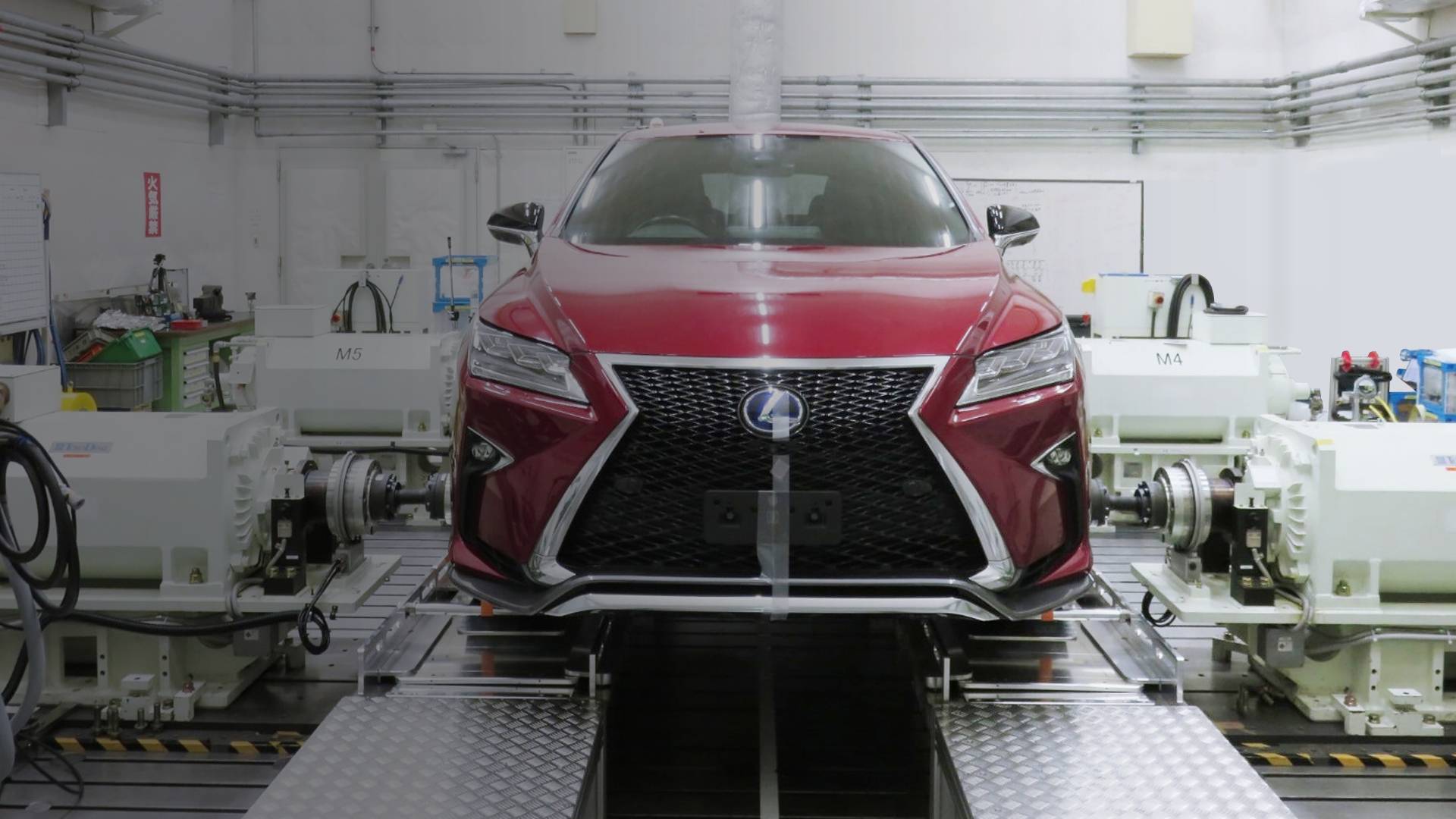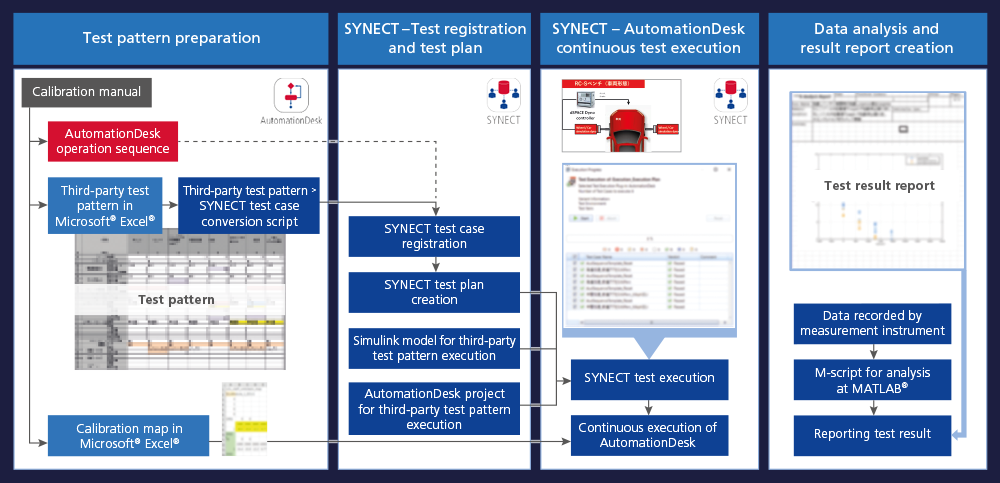The recent electrification trend in the automotive industry has created a pressing need to adapt to electrified systems in powertrain development. This adaptation process has become more complex, prompting Toyota to strive for improved efficiency with the advanced dSPACE automation solutions.
Test Environments Require Integrated Automation Platforms
There are two main requirements for frontloading adaptation and evaluation tasks as well as improving efficiency and productivity:
- Executing standardized automation methods on test benches for various powertrains
- Using test bench automation platforms that can be flexibly integrated into various test benches
Test Efficiency Challenges
In order to work efficiently with test benches, it must be possible to remote-control them, automate them, and easily and flexibly change the test sequences for test benches from different manufacturers and for various measuring tools. Mr. Taira, a test bench developer, explains, “I wanted to support the test team with a tool that would relieve them of many manual interventions.” He adds, “Drive modes in most tests can be categorized into several types, so changes of the base type must be simple and quick on a daily basis.” Therefore, Mr. Taira went about implementing a general-purpose operation flow by analyzing, disassembling, and reconstructing test bench operations, and then consolidating them into the following three parts to automate them:
- ECU operations (writing to and measuring RAM variables in the ECU software, etc.)
- Driver operations (accelerating, braking, shifting)
- Test bench operations (roller/dynamometer rotation speed, etc.)
Toyota started looking for a versatile and easily expandable platform that met these three points.
Evaluating a Test Automation Solution
Generally, each company establishes its own test bench automation solutions, the downsides being designs based on proprietary standards, high prices, and poor customizability. The SYNECT and AutomationDesk automation solution tool chain provided by dSPACE eliminates these drawbacks. The tool chain offers:
- Environment integration with standard ASAM-compliant interfaces
- High versatility in terms of output data formats, etc.
- Additional automation functions in a reasonable price range
- High compatibility with versatile general-purpose dSPACE platforms
- Shareable and reusable client-server test scenarios
Mr. Sekimoto, the main test bench user at Toyota, comments, “If we succeed in using AutomationDesk and SYNECT as the automation solution for our test benches, we will have the desired flexibility in testing at a fraction of the cost of other solutions.”
Implementing the Selected Test Automation Solution
Test bench automation with AutomationDesk was successfully demonstrated in a test setup. The basic ideas:
- Use the compatibility with ASAM standards that AutomationDesk provides to turn standard interfaces with third-party platforms into libraries and operate them via ASAM standards, such as XCP, ASAP3, XIL MAPort, and ODS.
- Separate test scenarios from parameters to create reusable and versatile test templates.
- Learn use cases from human test bench operators, and leverage these cases to separate operations into ECU operations, driver operations, and test bench operations, as well as to create the required and sufficient standard test scenarios.
After successful evaluation, this automation solution is now used on a number of Toyota test benches, such as powertrain test benches and chassis dynamometers. “Using AutomationDesk on several test benches provides us with powerful and particularly cost-effective test bench automation,” Mr. Taira concludes.
Efficient Test Management
Since the goal was not just to automate operations on test benches but to build an integrated development platform, Mr. Taira used dSPACE SYNECT to review development processes on test benches and optimize them.
- He built a test execution planning and management mechanism using SYNECT Test Management.
- He extended SYNECT and AutomationDesk using Python scripts to build an interface that can execute the entire process from test registration to test planning to test execution at the end user level.
- For parallel test preparation and execution and to achieve continuous test execution, he used SYNECT to separate work done in offline environments (test registration/planning) from online work (test execution).
- He enabled the sharing and reuse of test assets (derived from test scenarios and test plans) with a SYNECT client-server configuration.
“Since the drive sequences of all test benches are similar, sharing them between test benches was not difficult,” Mr. Sekimoto finds. He continues, “Separating the processes of stakeholders involved in testing and executing them in parallel with SYNECT Test Management to control automatic test execution centrally in SYNECT made it possible to run tests more efficiently.”
Findings and Outlook
With the powerful automation solution based on AutomationDesk and SYNECT, it is easy to define tests and track the test progress and status (pass/fail) during continuous test execution. The convenient graphical user interfaces make it particularly easy to rearrange test sequences, create repetitions and combinations of test sequences, and visualize them clearly. Simple changes of test sequences and test patterns can be made centrally. These quick test modifications facilitate everyday testing and increase the depth of testing. They also greatly improve collaboration with stakeholders involved in the testing process. The dSPACE tools helped Toyota succeed in frontloading adaptation and evaluation tasks and optimizing its processes. In light of these achievements, Toyota is currently adapting and expanding the processes to additional test benches.
Courtesy of Toyota








